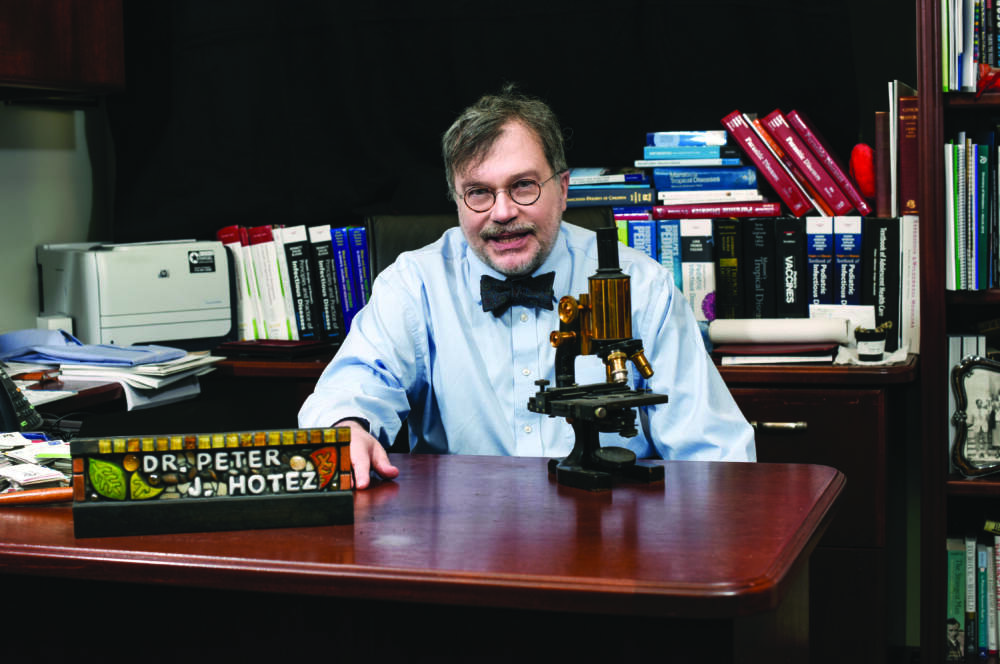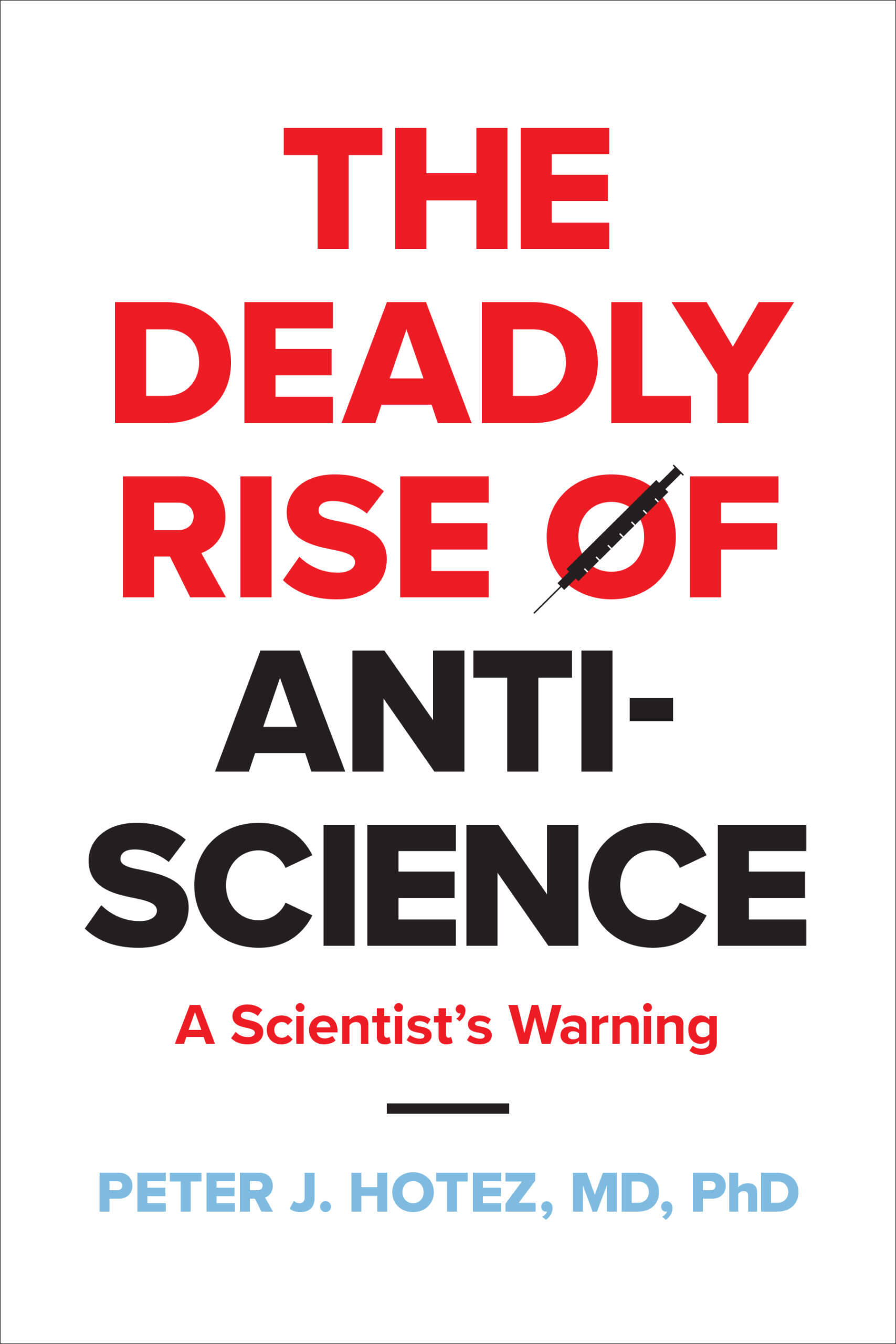Advertisement
In 'Deadly Rise of Anti-Science,' vaccine researcher Peter Hotez sounds the alarm on science denial

Florida Gov. Ron DeSantis recently told constituents under 65 not to take the new COVID-19 vaccines, despite Centers for Disease Control and Prevention and Food and Drug Administration recommendations that everyone older than 6 months get the shots.
DeSantis's statement is not based on science or data, which came as no surprise to vaccine scientists like Dr. Peter Hotez. He's been on the frontlines of what he describes as an aggressive and increasingly dangerous, often partisan, war on science.
He details the roots of the problem, his personal experiences and his ideas for moving forward in his chilling new book "The Deadly Rise of Anti-Science."
Hotez is a professor of pediatrics and molecular virology, founding dean of the National School of Tropical Medicine, and co-director of the Texas Children's Center for Vaccine Development. He joins host Robin Young to discuss the book.

Book excerpt: 'The Deadly Rise of Anti-Science'
By Peter Hotez
As bad as things had gotten by 2019 as a result of anti-vaccine campaigns that helped fuel the return of measles in the United States and that made daily life uncomfortable for me and other scientists, nothing quite prepared us for what was about to unfold with the emergence of COVID-19. For a few weeks at the pandemic’s outset, I thought there was a remote possibility that with the world worried about a looming public health impact, the anti-vaccine movement might perhaps go into hibernation or even retreat. Dr. Nancy Messonier, the director of the National Center for Immunization and Respiratory Diseases at the US Centers for Disease Control and Prevention (CDC), warned in February 2020 about serious “disruptions to daily life,” and I thought this might prompt many Americans to clamor for safe and effective COVID-19 vaccines.
Many Americans were indeed eager to receive their COVID-19 vaccinations. However, the opposite also happened. As the pandemic unfolded, it became essential to implement new social-distancing measures and face mask requirements as the government launched its Operation Warp Speed program to accelerate the development of new mRNA (and other technologies) COVID-19 vaccines. These activities mobilized a counteroffensive in the form of a new version of the anti-vaccine movement that cared less about autism and more about personal liberties. Anti-vaccine activists embarked on a new propaganda campaign of “health freedom” or “medical freedom.” By invoking freedom rather than autism, the anti-vaccine movement had become increasingly political, first linking to the Republican Tea Party in Texas
Advertisement
before expanding to far-right and conservative groups across the country. This trend had first begun in the 2010s, as anti-vaccine groups in America and extremist politics on the right found each other in unique and interesting ways.
First, the anti-vaccine movement needed to reenergize, in part because its foundation based on phony autism links was unraveling. Many of us in the biomedical community provided convincing evidence that vaccines did not and could not cause autism. Detailed and summarized in my 2018 book, Vaccines Did Not Cause Rachel’s Autism, the evidence included large epidemiological studies showing that kids who received vaccines were no more likely to acquire autism than unvaccinated kids. Such findings were further supported by laboratory animal studies that could not find a relationship between vaccines and neurologic changes. In addition, we offered a compelling alternative narrative backed by years of biomedical research supported by the National Institutes of Health, the Simons Foundation, Autism Science Foundation, JPB Foundation, and other philanthropies, which identified multiple autism genes expressed in early fetal development. Therefore, while the thread of autism and vaccines continues among anti-vaccine groups, it is no longer the major driver. The bottom line was that anti-vaccine groups needed a new angle or message to maintain cohesion and to receive an infusion of funding. Linking to far-right elements provided both, even assisting them in the formation of new PACs to lobby or educate state legislatures voting on school vaccine exemptions. One of the first such PACs was Texans for Vaccine Choice in 2015, and I believe such politicization by creating PACs and related mechanisms benchmarks a period when children increasingly attended school without their full complement of routine immunizations ordinarily required for attendance.
At the same time, the political far-right sought more adherents and followers. Anti-vaccine groups, including the disinformation dozen, provided “one-stop shopping” to acquire a significant cohort of people who might follow in the path of extremist groups. Through the anti-vaccine movement, potentially thousands of new people could augment the ranks of those professing allegiance to an extremist agenda. In this way, the anti-vaccine groups and the far-right found and mutually reinforced each other. Even groups linked to the January 6 insurrection at the US Capitol, such as the Proud Boys, began promoting an anti-vaccine agenda. In turn, anti-vaccine rallies could count on the insurrectionist groups to join their protests.
The coalescing of the anti-vaccine and far-right created new synergies to amplify a reinvigorated anti-science disinformation empire. Its elements included open expressions of distrust of science by ultraconservative members of the US Senate, House of Representatives (especially its House Freedom Caucus), and some governors, and even efforts by these elected officials to humiliate scientists in public or threaten their employment. They included introducing bills to demand the firing of a prominent government biomedical scientist who served the nation for decades, holding hearings or roundtables to promote anti-vaccine viewpoints, and harassment of nongovernment biomedical scientists who work at universities or nonprofit organizations. Their actions against science and scientists operated through unprovoked and unjustified public pronouncements and—and much more.
High-profile conservative news outlets such as Fox News regularly amplified these messages, and the scientific community came under fire from the networks’ highly viewed nighttime anchors. A third group, a carefully cultivated cadre of intellectuals or pseudointellectuals from universities and think tanks, gave academic cover to the assault from the far-right by producing well-crafted false narratives about the harmful effects of COVID-19 preventive measures. In turn, these activities fueled hate from White nationalists and other extremist groups, along with unwell or uneducated individuals, who interpreted the public commentaries on news outlets and podcasts as dog whistles. Finally, even the federal courts had an indirect role, especially conservative justices, who reversed government mandates for vaccines, masks, and other precautions, although in some cases it became difficult to attribute their rulings to ideological leanings versus their bona fide interpretation of the law.
The impact of such anti-science activities was immediate on two fronts: First, it made scientists fearful of speaking out to defend the science of COVID-19 vaccines and preventions or to come to the aid of our colleagues under attack. The same might be said of many of our scientific and professional societies. More important, it caused populations in conservative stronghold areas to shun or defy COVID-19 vaccines and other preventions. This led to massive losses in human life as the virus ripped through unvaccinated populations across the nation, but especially in these regions.
Excerpted from "The Deadly Rise of Anti-science" by Peter J. Hotez, MD, PhD. Copyright 2023. Published with permission of Johns Hopkins University Press.
This segment aired on September 19, 2023.